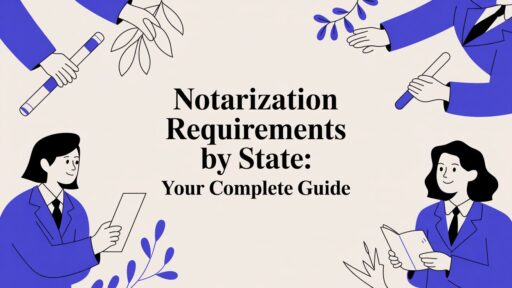In today’s dynamic workplace, a well-crafted employee contract is more than just a formal agreement; it’s a roadmap for mutual success. At the heart of this contract lies the purpose statement, a crucial element that outlines the core objectives and expectations for both the employer and employee. This statement not only clarifies roles but also aligns individual goals with the company’s mission, fostering a sense of belonging and motivation.
A purpose statement in an employee contract serves as a guiding light, ensuring all parties are on the same page from the outset. It’s designed to articulate the broader vision and values of the organization, providing context for the employee’s role within the bigger picture. By understanding the significance of a purpose statement, employers and employees can cultivate a more cohesive and productive work environment. This article delves into the essential components of a purpose statement and offers examples to guide effective contract creation.
Understanding Employee Contracts
Employee contracts form a pivotal aspect of employment relationships, creating a legal framework that defines roles, responsibilities, and rights. This document ensures mutual understanding between parties by detailing job-specific duties, compensation, benefits, and termination conditions. Employee contracts also incorporate confidentiality agreements and non-compete clauses to protect company interests and intellectual property.
Contracts provide security for both employers and employees. Employees gain a clear outline of what to expect, allowing them to focus on their roles effectively. Employers, conversely, reinforce organizational standards, paving the way for compliance and smoother operations. In disputes, contracts serve as a reference point, outlining agreements made at the onset.
To maximize benefits, contracts must remain aligned with legal requirements. Regular updates reflecting changes in employment laws safeguard both parties. Implementing comprehensive contracts contributes to a transparent, well-structured working environment, fortifying workplace relationships and promoting productivity.
Importance of a Purpose Statement
A purpose statement is integral to an employee contract. It connects the employee’s role with the company’s mission.
Defining the Purpose Statement
In an employee contract, the purpose statement outlines the core objectives and values of the role. It clarifies both the company’s expectations and the employee’s responsibilities. The statement acts as a bridge between individual goals and organizational vision, ensuring alignment from the outset. This clarity fosters a sense of direction and purpose.
Benefits of Including a Purpose Statement
Including a purpose statement offers several advantages. It enhances communication by providing a clear reference point for objectives and expectations. Employees understand their roles better, leading to increased engagement and productivity. Employers benefit from reduced conflicts as employees know what is expected from them. Additionally, a strong purpose statement can attract talent aligned with the company’s mission, strengthening overall workforce alignment.
Crafting an Effective Purpose Statement
A purpose statement in an employee contract aligns the employee’s goals with the company’s mission. It provides direction and sets clear expectations, creating a harmonious work environment.
Key Elements to Include
- Clarity: Use precise language to articulate the role’s core objectives and how they contribute to broader organizational goals.
- Alignment: Connect the role’s responsibilities to the company’s mission and values, ensuring both parties understand the strategic importance.
- Specificity: Detail expectations and definitions of success for the employee’s role.
- Relevance: Incorporate evolving company objectives to keep the statement current and impactful.
- Vagueness: Avoid ambiguous language that can lead to misunderstandings about roles or expectations.
- Overcomplexity: Do not include overly technical jargon that might confuse readers.
- Inflexibility: Ensure the statement is adaptable to changes in the business landscape.
- Disconnection: Prevent disconnect between the employee’s role and the company’s mission to maintain alignment and motivation.
Purpose Statement Employee Contract Example
An effective purpose statement within an employee contract enhances clarity and aligns roles with organizational goals. It communicates core objectives, connecting the employee’s responsibilities to the company’s mission.
Detailed Example Analysis
A purpose statement should start with a succinct overview of the company’s mission. For instance, in a tech company, the statement might read, “Enhancing user experience through innovative solutions.” This aligns employee roles with broad company objectives. Next, include specific goals pertinent to the role. For a software developer, include objectives like “develop scalable applications” or “improve software efficiency.” Finally, conclude with a focus on personal and professional growth opportunities, such as “encourage continuous learning and innovation.”
Customizing the Example for Different Roles
Adjust the purpose statement based on the role’s function, maintaining alignment with the company’s mission. For a marketing manager, emphasize strategies like “driving brand awareness” and “expanding market reach” while fostering creativity. In contrast, for a customer service representative, focus on “enhancing customer satisfaction” and “providing exceptional service.” Tailor specifics to reflect the role’s unique contributions to the company’s objectives, ensuring each statement resonates with the intended audience.
Legal Considerations
Employee contracts present several legal considerations to ensure compliance with employment laws and safeguard both employer and employee rights. It’s important that each contract adheres to relevant labor laws, addresses jurisdiction-specific regulations, and includes legally enforceable terms.
Compliance with Employment Laws: Contracts must align with local and federal labor laws, which may include wage requirements, work hour limitations, and employee entitlements. Noncompliance can lead to legal disputes, penalties, and regulatory actions.
Confidentiality and Non-Compete Clauses: To protect proprietary information and competitive interests, contracts often incorporate confidentiality agreements and non-compete clauses. These terms must be reasonable in scope and duration to be legally enforceable, balancing the company’s security needs with the employee’s right to pursue career opportunities.
Termination Provisions: Employee contracts typically outline conditions under which employment can be terminated, including notice periods and grounds for dismissal. Clear, fair termination terms help prevent wrongful termination claims and ensure mutual understanding.
Review and Update Regularly: As employment laws evolve, contracts should be reviewed and updated to maintain compliance. Legal advisors often assist in this process, ensuring the contract reflects the latest legal standards and minimizes risks of litigation.
These legal considerations not only protect both parties but also contribute to a fair and transparent workplace environment.
Discover the Power of BlueNotary:
Integrate your Business, Title Company, or Law Firm to Satisfy your Customers and Decrease Turnaround
Get a document Notarized/Sign-up
Join the Free Notary Training Facebook Group
Conclusion
A well-crafted employee contract with a clear purpose statement is a cornerstone of effective workplace relationships. It aligns individual roles with the company’s mission, fostering clarity and engagement. By integrating legal considerations and ensuring compliance with evolving laws, these contracts provide a secure framework for both parties. This approach not only enhances productivity but also attracts talent aligned with organizational goals. Tailoring purpose statements to specific roles while maintaining alignment with the company’s mission ensures that employees are motivated and focused. Ultimately, such contracts cultivate a transparent and harmonious work environment, benefiting both employers and employees.
Frequently Asked Questions
What is the purpose of a purpose statement in an employee contract?
A purpose statement in an employee contract outlines the core objectives and expectations for both the employer and the employee. It aligns individual goals with the company’s mission, serving as a guide to ensure clarity and cohesion from the start of the employment relationship. This helps in enhancing communication, reducing conflicts, and fostering a sense of direction and purpose, which can improve employee engagement and productivity.
Why are employee contracts important?
Employee contracts are crucial as they define the legal framework of employment relationships. They outline roles, responsibilities, compensation, benefits, and termination conditions, ensuring mutual understanding. Contracts also include provisions like confidentiality agreements and non-compete clauses to protect company interests. This clarity provides security for both parties and allows employees to focus on their roles while helping employers maintain organizational standards.
What should a well-crafted purpose statement include?
An effective purpose statement should include clarity, alignment with the company’s mission, specificity in expectations, and be relevant to evolving company objectives. It defines the core objectives and values of the role, clarifying both the company’s expectations and the employee’s responsibilities. This ensures each statement resonates with its intended audience while maintaining alignment with the company’s mission.
How can purpose statements enhance workplace productivity?
Purpose statements enhance productivity by connecting an employee’s role with the company’s mission, clarifying objectives and expectations. This reduces confusion, fosters better communication, and enhances employee engagement. When employees understand how their roles contribute to the bigger picture, it increases motivation and attracts talent that aligns with the company’s goals, leading to stronger workforce cohesion.
What are common pitfalls to avoid in purpose statements?
Common pitfalls in purpose statements include vagueness, overcomplexity, inflexibility, and disconnection from the company’s mission. Such issues can hinder understanding and motivation, making it crucial to ensure that the purpose statement is clear, relevant, and aligned with the company’s objectives. Avoiding these mistakes helps create a harmonious work environment and ensures employees are engaged and aligned with organizational goals.
How should employee contracts address legal considerations?
Employee contracts should comply with local and federal labor laws, covering wage requirements and work hour limitations to avoid legal issues. They should include confidentiality agreements and non-compete clauses, balancing company security with employee rights. Clear termination provisions should also be specified to prevent wrongful termination claims. Regularly updating contracts in line with evolving laws maintains a fair and transparent workplace, protecting the rights of both employers and employees.








